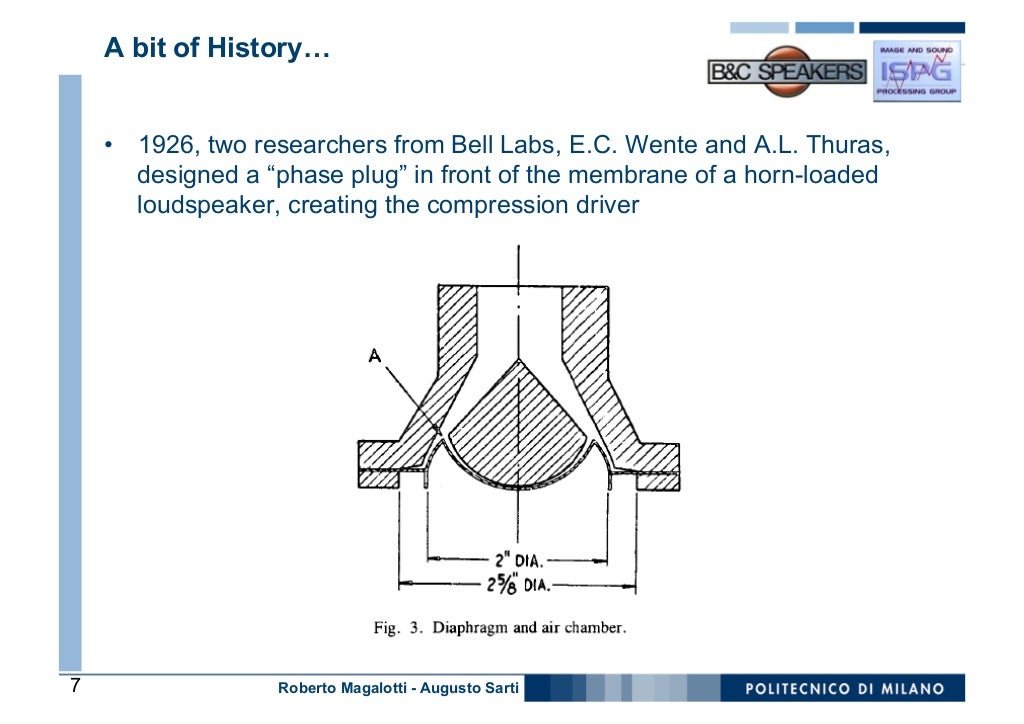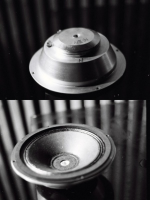This is where I'm losing you - are you only talking about the cross sectional area of the duct? If the duct is 1 inch in diameter and 7 inches long why wouldn't a 2kHz wave fit? The compression and rarefactions of a 2kHz wave are all there along the length of the duct. Maybe you mean something else and I'm just being confused by the way you're saying it?For instance, if you try to generate a 2000Hz wave in a duct that's an inch in diameter, it's simply not going to happen. 2000Hz is almost seven inches long; it simply won't fit in a duct that's an inch in diameter. So the wave will form when there's a duct large enough to contain it.
If a wave is under compression wouldn't it move faster than mach1 (1125.33ftsec)
I know the wave in a port on a box can move fasterthan Mach1
There would be a definitive BOOM, rattling windows and deafening those nearby, would there not?
What evidence supports your claim?
Sent from my Nexus 6 using Tapatalk
This is where I'm losing you - are you only talking about the cross sectional area of the duct? If the duct is 1 inch in diameter and 7 inches long why wouldn't a 2kHz wave fit? The compression and rarefactions of a 2kHz wave are all there along the length of the duct. Maybe you mean something else and I'm just being confused by the way you're saying it?
Easiest way to visualize it is to play around with the wavefront simulator in hornresp. And many kudos to David McBean for implement enhancements to the simulator based on my request. (I tried valiantly to implement my own wavefront simulator, but couldn't pull it off.)
There would be a definitive BOOM, rattling windows and deafening those nearby, would there not?
What evidence supports your claim?
Sent from my Nexus 6 using Tapatalk
I don't know for certain , I was just told it by a co worker.
Also he showed me in winisd the port velocity in Mach
we modeled a few boxes and was able to get the port to go over mach1
Maybe it was termlab (Rockford version of winisd)
Regardless, that's generally the question here. I s it possible
Or does it just mean there's added air pressure and have Nothing to do with speed of sound?
You make a good point on the boom, but isn't that when a object pushes through air faster than the sound it's making. If it's air by itself would it even make a noise? If so, the sound wouldn't be sound until the air wave slows down ...?
Idk we need a physicist
But my point being, which I don't know the answer to .
In a horn, would you shorten the delay because of compression?
My guess is no otherwise we probably would have heard about it . But it's one of those silly questions lurking in my pea brain
An externally hosted image should be here but it was not working when we last tested it.
image hosting sitecertificity.com
Last edited:
You make a good point on the boom, but isn't that when a object pushes through air faster than the sound it's making. If it's air by itself would it even make a noise? If so, the sound wouldn't be sound until the air wave slows down ...?
My guess is no otherwise we probably would have heard about it . But it's one of those silly questions lurking ..
It's not a silly question, it goes to the heart of why this line of research is so exciting: horn theory hasn't evolved much in the last 70 years.
Horns match the mechanical output of a diaphragm to a constricted (compressed) column of air that couples with the air outside the mouth of the horn.
Sound travels through air at a fixed speed, in all directions from the source until it encounters a boundary.
"It is important to realize that while all sound in the equivalent conditions travels at the same speed, whether louder or softer, higher or lower, the speed or force of the individual molecules bumping into one another increases with amplitude and/or frequency."
http://www.indiana.edu/~emusic/acoustics/speed.htm
What makes this development so interesting is the reduction in size required to build the horn with a low distortion component, using 3D printing.
By extension, it means that the OP could sell us the rights to his design, and we could make one for our own use.
"Breaking the mold" if you'll excuse the pun.
Sent from my HP 10 G2 Tablet using Tapatalk
Thanks!
That link was very helpful bringing me back down to reality.
Yeah, Mr.Bateman has inspired me so much throughout the last few years.
I know him from another forum as well where he is very well respected.
I am attempting to make my own horn soon. Still fiddling around with hornresp
And reading a lot, when I do decide I have enough know how to even attempt doing it, I want to make sure I at least have a basic understanding of what's happening first.
🙂
That link was very helpful bringing me back down to reality.
Yeah, Mr.Bateman has inspired me so much throughout the last few years.
I know him from another forum as well where he is very well respected.
I am attempting to make my own horn soon. Still fiddling around with hornresp
And reading a lot, when I do decide I have enough know how to even attempt doing it, I want to make sure I at least have a basic understanding of what's happening first.
🙂

Manipulation and shaping of wavefronts has kept me occupied lately. Although a lot of research in this field has been done since the dawn of audio - just look up the old patents from Bell Labs and Western Electric - the availability of advanced software has taken research to a new level. This shift in technology has brought forth some excellent products: the JBL PT and Image Control waveguides, as well as several compression drivers featuring a complex diaphragm and phase plug design.
The same technological research and development has also major implications for live- and installed sound (PA), where the heavy full-range cabs have been replaced with digitally controlled line-arrays.
What's the effect of this paradigm shift for sound at home, in theatres, clubs and outdoor events?
An interesting perspective from an (educated) audiophile.
And on "traditional vs. high-tech loudspeaker drivers and materials", with a comment from the great John Dunlavy.
Last edited:
The "Funktion One Sound" - provided it's installed properly and managed accordingly - is hard to beat, especially for electronic music. That sound is the sound of "Paper". Tony Andrews prefers the vocal range to be covered by paper cones, even if it means a 10" playing all the way up to 4000Hz, hence the AxHead phase-plug.As noted in the first post, I wasn't trying to make a waveguide with a narrow pattern. I was trying to put the midranges of a Synergy Horn INSIDE the horn, like this: <snip>
How about that Resolution 1 in the picture above? It's a 2-way, over 100dB sensitive and able to hit 130dB, with paper? Yesss!
This is what's behind the Axhead:
Attachments
Last edited:
It’s amazing how great minds can have the same ideas.
Have a look at this patent I stumbled upon yesterday before I read this post. US2016061614 COAXIAL CENTERBODY POINT-SOURCE (CCPS) HORN SPEAKER SYSTEM
I love the last part of the quote from the patent: “optimized for high sound pressure levels (horns), while others are optimized for wide dispersion (line arrays), while others are optimized for high-fidelity (mastering speakers); yet each of these loudspeaker topologies operates by summation of frequencies produced by multiple, bandwidth- specific (woofer, mid-range, tweeter, etc.), drivers used to accurately reproduce music at sound pressure levels sufficiently loud for listeners positioned at mid- or far-field and to satisfy audiences taking part in socially sanctioned rituals of induced hearing loss.”
Have a look at this patent I stumbled upon yesterday before I read this post. US2016061614 COAXIAL CENTERBODY POINT-SOURCE (CCPS) HORN SPEAKER SYSTEM
I love the last part of the quote from the patent: “optimized for high sound pressure levels (horns), while others are optimized for wide dispersion (line arrays), while others are optimized for high-fidelity (mastering speakers); yet each of these loudspeaker topologies operates by summation of frequencies produced by multiple, bandwidth- specific (woofer, mid-range, tweeter, etc.), drivers used to accurately reproduce music at sound pressure levels sufficiently loud for listeners positioned at mid- or far-field and to satisfy audiences taking part in socially sanctioned rituals of induced hearing loss.”
Last edited:
- Status
- Not open for further replies.
- Home
- Loudspeakers
- Multi-Way
- Ultra Shallow Waveguides

